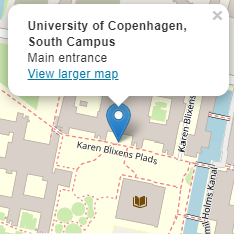Lecture series Art and Movement
 Pygmalion with a Kodak: Sculpture and Photography c. 1900
Pygmalion with a Kodak: Sculpture and Photography c. 1900
Talk by Professor Michael Hatt (University of Warwick)
While chronophotography has been much discussed as the paradigmatic example of how photography captures movement, it is not the only way in which photographers at the turn of the twentieth century attempted to represent motion. In this highly speculative paper, I want to explore a challenge to chronophotography, in the work of American pictorialist photographer Fred Holland Day. Day does no less than attempt to reconfigure the relationship between photography and movement by thinking sculpturally rather than cinematically, basing his idea of movement on the Pygmalionesque moment when a body magically shifts from stasis to kinesis. In doing this, Holland Day also offers an alternative model of how photography can represent time, desire, and – to put it, perhaps recklessly, in Proustian terms – a body of experience rather than the body of habit.
Moving Sculpture in late Victorian Fiction
Talk by Associate Professor Lene Østermark-Johansen (Department of English, Germanic and Romance Studies)
In his Laocöon (1766) G.E. Lessing had distinguished between the visual arts and poetry as art forms existing in space and time respectively; for more than a century his text was widely read and accepted in England. I want to explore the ways in which late Victorian writers like Walter Pater and Vernon Lee challenged Lessing’s rigid distinctions in their short fiction and essays, where sculptural figures spring to life, and where the contemplation of sculpture causes kinesthetic experiences in the viewer, and motion and emotion merge. In Lee’s theoretical writings, co-authored with Kit Anstruther-Thomson in the late 1890s, the perceived object and the perceiving subject blend almost imperceptibly, and Pygmalion and Galatea may have changed places, if only momentarily.
This is an Engerom focus event within the research platform Sense and Sensibility

